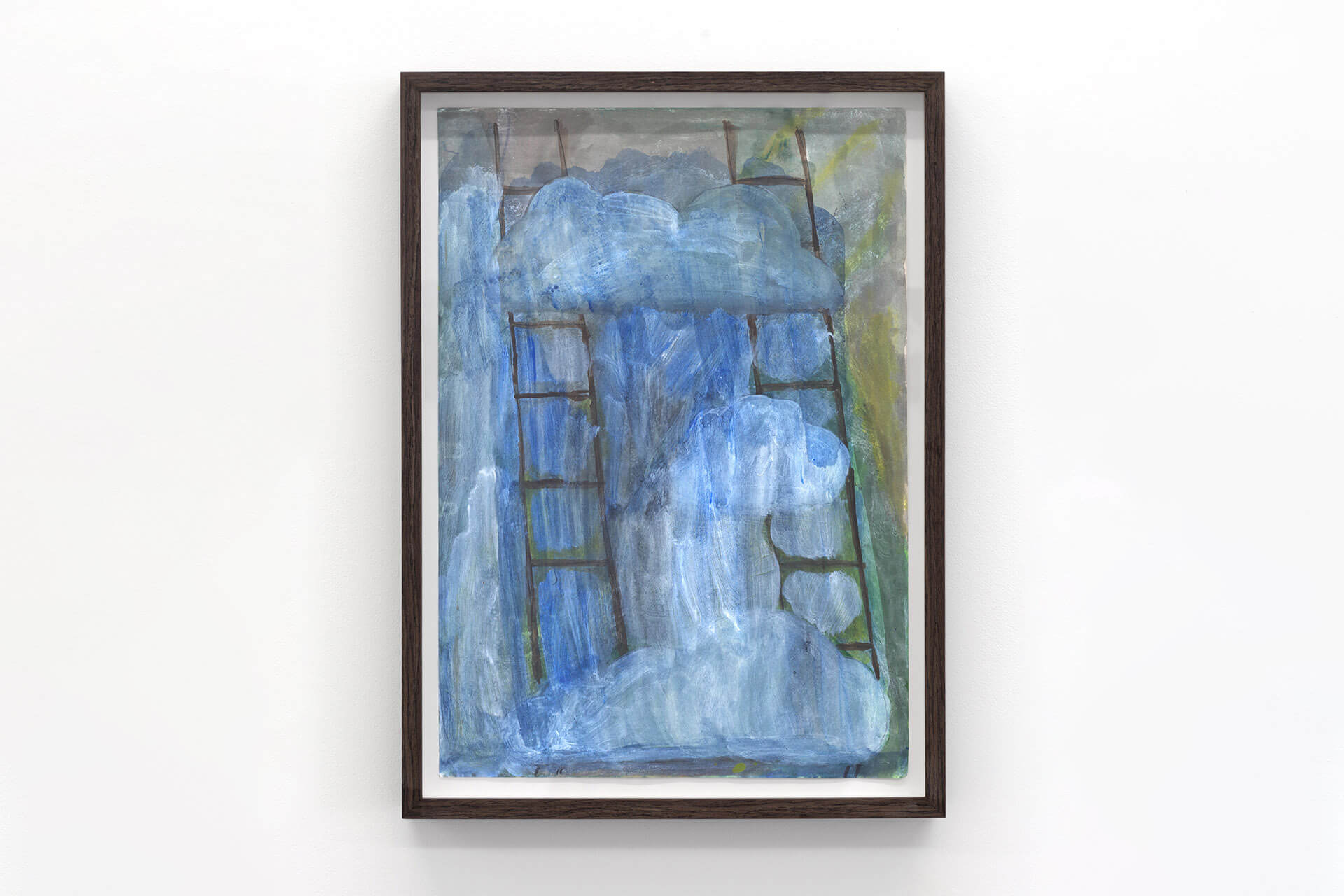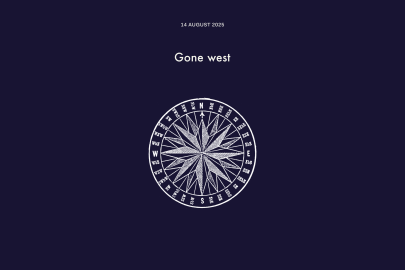Apr 23, 2023 Art
In the card game 500, the misère bid usually indicates a poor hand, hence the name — misery. To bid on misère is to dedicate yourself to losing every ‘trick’ of the game and, in doing so (if you lose correctly), claim success in the end. There are few games where the appearance of losing is potentially fortuitous, and the art market is not thought to be one of them.
Misère, an exhibition by artist Ammon Ngakuru (Ngāti Maniapoto, Ngāpuhi) at Coastal Signs, contained a collection of new artworks presented via an alternative commercial model. The artworks were offered in an open auction process, a form of sale that is uncommon in commercial gallery contexts. Galleries are usually careful to guide the (hopefully upward) value of an artist’s work, calling on a range of opaque tools such as discreet sales assistants, little red stickers and the acronym ‘POA’ towards this end. Ngakuru’s conceptual Misère did away with all that, and offered one canvassed ledger (also titled Misère) that encapsulates the risk and reward of selling art.
Misère is more than a ploy on the market; the names and bids inscribed on Misère offer a retelling of the relationships surrounding Ngakuru and Coastal Signs more broadly. Among the names are friends, teachers — even bosses — of the artist, who, with sometimes modest means, have entered a high-dollar marketplace. It’s an odd conflation of the predictable few (notable collectors and art players) and people close to the artist who sustain his practice in familial terms. Misère enacted a surprisingly playful competition among these bidders, as each vied, sometimes by single-dollar increments, to best the others.
Gallerist Sarah Hopkinson was there as Misère unfolded and she was the one who inscribed each new name on the canvas ledger — including her own, in a sign that the gallerist was still willing to guide the market’s invisible hand. Speaking from the gallery, Hopkinson observed that “early names are people inside the industry — artists and friends of the artists. The most obvious thing, apart from the fact that names and bids are on display, is that a far wider range of people have felt they are able to participate.” Reflecting from the exhibition’s midpoint, Hopkinson had her suspicions about where the bidding would go: “I’m assuming the make-up of the ledger will change over time as the prices rise, and I assume, for the most part, the people with resources will top most of the lists.” Misère — and Coastal Signs more broadly — ride the tension of proposing a more transparent process while still courting the same big money. True to Hopkinson’s prediction, those resources eventually showed up, and their names — familiar in the art world — peppered the last bids. A few more modestly endowed fans made it to the finish line, too.
At the close of the exhibiton, the record of bidding showed a range of $700–$5000, reasonable prices for an early-career artist, as the market around Ngakuru seemed to self-regulate. There would be no triumphant failure, no losing every trick but winning (conceptually at least) in the end. It turns out that people — mostly wealthy — wanted the objects and were willing to pay good money for them. Fair enough, too — the paintings are good. Very good. This is the discreet tension of Misère; behind the big gesture to the art market are objects that seem concerned only with themselves, with their sealed worlds of ascending ladders, mirrored doves and golden windows. It’s dreamy art that teeters on the otherworldly and feels miles away from the goings-on of the market.
I asked Ngakuru about this tension between the objects and the conceptual Misère. “The idea of allowing the audience to set the price of the artwork through this bidding process can only operate well if people believe in the work, or at least think they are worth owning,” he said. “I was trying to make real paintings that had real meaning beyond the boundaries of the exhibition and this bidding process. The work functioning well relies on them being sincere artworks.” And they are sincere. There is something of children in their construction and worlding, roughly gestured and oddly proportioned; the paintings seem to carry a hidden cipher — everything should mean something.
Questions about the attribution of meaning arise throughout Misère, as social and financial systems collide with more personal and enigmatic connections. This flux is carried in the vessel of a Toyota Prius — six Toyota Prii, in fact — entitled Uber 1 through Uber 6. The Uber paintings pose a ubiquitous symbol of the digital economy as something intimate, held in tactile brushwork. In Ngakuru’s world, the Uber becomes a wagon that can carry us home and deliver us from a dark night, the headlights shining bright. Returning to this world, a Prius is the car driven by Hopkinson that is reliably parked outside Coastal Signs, and as Ngakuru observes of the Uber paintings, “These cars are a feature of the gallery in the way that they circle past on Anzac Ave.” The works in Misère play with this self-referential impulse in contemporary art, occasionally depicting artworks by other beloved artists, such as Pierre Huyghe’s Human (2014) — a ghostly whippet with a pink leg.
Misère overwhelms, offering tangled narratives between the economy and dreaming of art. It’s a lot to carry. Trying to rest among Ngakuru’s clouds, it’s possible to miss the significance of the bidding. I ponder this with Ngakuru, who suggests that “the pictures become slightly less important, they become about how they’re valued, and the network that values them”. Standing amid his paintings, Ngakuru seems as much a spectator as the rest of us. “[The Misère] makes the paintings weird in the sense that it is difficult to gather meaning from their subject matter alone. I guess within the context and structure of the exhibition, the question of value is foregrounded or exposed and the ideas and images in the work need to be considered against that.” True enough. The Misère is imprinted on these objects, and Nathan Pohio’s $250 bid for Spiral Jetty will travel with it, even if Jim and Mary Barr won the trick.
This is not the first time Ngakuru has explored the value of things. In Pumice — his first exhibition at Coastal Signs — Ngakuru recontextualised a British officer’s sword made in 1827 that he had bought cheaply online. This gesture marked the beginning of a more pointed interrogation of value in his practice, with the artist working through narratives of colonial violence and erasure. With Misère, Ngakuru has continued to ask deep questions of context — this time his own in the art market — and evaded the expectations often directed toward young Māori artists to perform identity in the art world. Speaking to artist and writer Ngahuia Harrison (Ngātiwai, Te Kapotai, Ngāti Pukenga, Pākehā) in the recently released publication Weather Paintings, Ngakuru elaborates on his identity as a Māori artist and patient (sometimes sleeping) methodology. In one revealing moment, Ngakuru describes working from “a gap or lack of understanding because it feels like a good place to be imaginative”. This sense of imagination carries through Misère. It is an imagination that doesn’t forget the world but instead journeys through its faultlines, augmenting familiar tensions with heartful and open ponderings.
–






